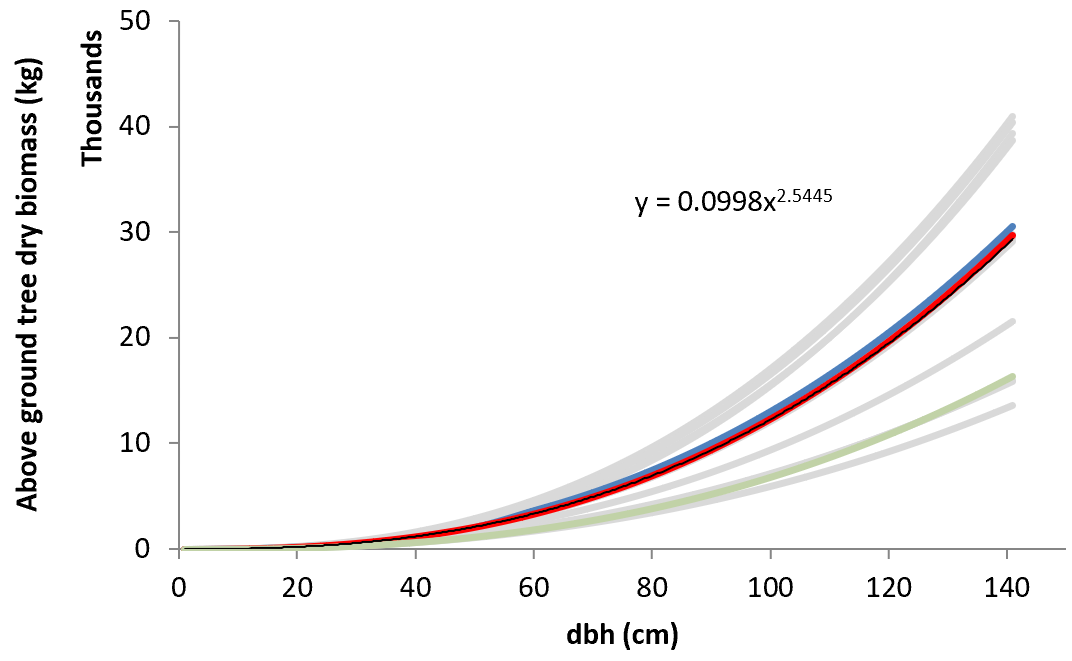|
Tree carbon storage calculator by Camilo Mora, Ph.D. |
|
|
|
|
|
Summary: Climate change is truly a terrifying thing. By increasing the amount of CO2 in the atmosphere, we are increasing the temperature of the planet, which in turn is increasing drought, heatwaves and wildfires in some areas, and extreme precipitation and floods in others. Add sea-level rise to the mixture and you get the picture. All these climatic hazards have the capacity to make humanity sicker, hungrier, thirsty, homeless, poor, and unsafe.
Body Mass =0.0998 * DBH^2.5445 In turn, Niklas & Enquist (2001) found that one can use tree body mass to predict their growth rate, as: Growth Rate =0.208 * Body Mass^0.763 By knowing the weight of a tree, and their growth rate, one could predict the weight of the tree at different time intervals. Just like a pediatrician is able to predict the approximate weight of a child at different ages. Until now, all weight calculations are for the part of the tree that one sees above ground. It turns out, that Cairns et al (1997) found that below ground biomass is about 24% the weight of the tree above ground. So we need to multiply the tree mass from Chave et al . (2001) by 1.24. That is, the weight of the tree above ground, plus the 0.24 fraction below ground. Up to this moment, we have been able to calculate the weight of the tree (below and above ground), but not all that weight is carbon. As one may expect, the tissue of the tree has many other chemical elements. Lucky for us, Kirby & Potvin (2007) found that 47% of the dry weight of a tree is carbon. So, we can simply multiply our estimated weight of a tree by 0.47 to know the approximated carbon in the given tree. Ok, we now have a good approximation to the carbon stored in a tree. But carbon is different from CO2. CO2 has two molecules of oxygen, so it is heavier. The molecular weight of carbon is 12.0107, while that of oxygen is 15.999. So the molecular weight of CO2 is 44.0087 or 3.6663 times heavier that carbon alone. So to estimate the CO2 that could be taken from the atmosphere by a tree, one needs to multiply the weight of the carbon in the tree by 3.6663. The result is a time series projection of the CO2 likely to be removed by a tree from the atmosphere and stored in its body by simply knowing the diameter of the tree. Tree CO2 sequestration calculator Tree diameter at Breast Height: The Tree CO2 sequestration calculator was developed by Camilo Mora. |

